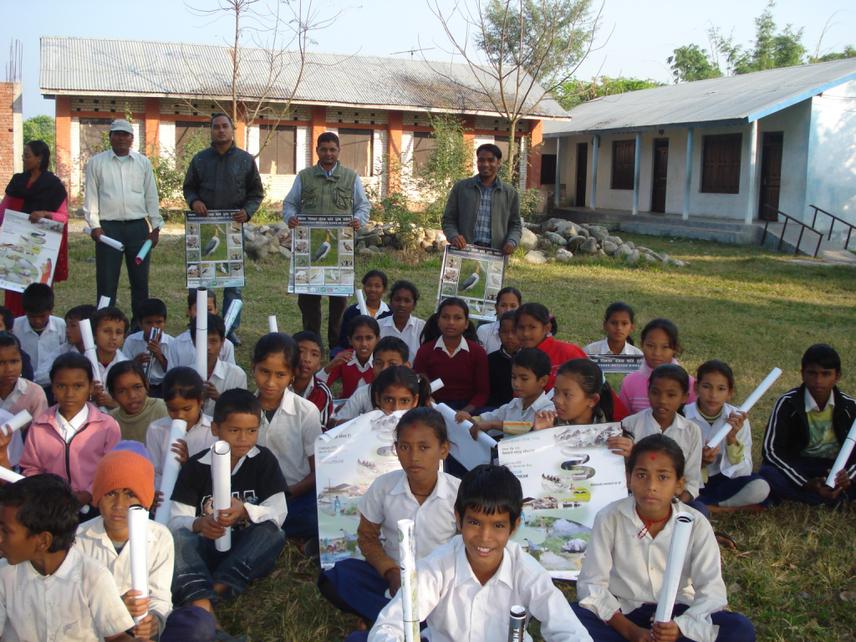Paras Singh
Other projects
11 Dec 2012
Awareness Program for Conservation of Threatened Wetland Birds in and around Koshi Tappu Wildlife Reserve (KTWR), Eastern Nepal
28 Sep 2015
Migratory Wetland Bird Conservation Programme in Chitwan - Annapurna Landscape, Nepal
The project aims to create awareness for the conservation of wetland birds in the villages adjacent to wetlands focusing primarily on influential people, tribes and school children.

Total of 29 endangered species of wetland birds are at risk due to various anthropogenic pressures in Nepal (Baral and Inskipp 2004). Lesser Adjutant (Leptoptipos javanicus), Baer’s Pochard (Aythya baeri), Comb Duck (Sarkidiornis melanotos),Black Stork (Ciconia nigra), Painted Stork ( Mycteria leucocephala), Black headed Ibis ( Threskiornis melanocephalus),Asian Openbill ( Anastomus oscitans) Darter ( Anhinga melanogaster) Yellow-wattled Lapwing (Vanellus malarbaricus), Water Rail ( Rallus aquaticus), Watercock ( Gallicrex cinerea), Barred Cuckoo Dove ( Macropygia unchall) are considered threatened bird at national level (Baral and Inskipp 2004). The most former two species of the birds are also considered threatened globally (Birdlife International 2001, IUCN 2006). Wetland birds are especially at risk from hunting and trapping. Bird hunting, netting and egg collecting have been identified as serious threats in Chitwan’s rivers (Roberts et al 2002, Tyabji 2002). Over fishing and poisoning in wetlands (to obtain fish) are others threats at Chitwan and significantly reduce the food supply of birds (Dahal 1999, Subedi 2001, Roberts et al 2002). Threats are more prevalent in the area because important wetlands such as, Narayani and Rapati Rivers, Bishazari Lake, Many Paddy Fields, shallow marshes and ponds are located outside CNP.
Furthermore, local people are oblivious about conservation of wetland birds around them, which are key indicators of environmental quality. Therefore, local community-based approaches are crucial to create a positive impression among local people towards wetland birds and their habitats conservation. That’s why this program is implementing in the villages adjacent to wetlands to create awareness among influential people, tribes (Musar, Bote and Tharus) and school children.
The conservation activities of this project include Workshop, School Teaching Program, Bird Watching Program, Essay Competition, Rally, Formation of Wetland Bird Conservation Club (among students), Group Discussion, Skill Development Training (for villagers), Formation of Wetland Bird Protection Committee (among villagers), Displaying Hoarding Board, Posters Publication and FM Radio (People Voice for Conservation). It is believed that this program will help to change traditional perceptions of the indigenous village people, such as the belief that natural resources will never be finished due to overuse and help to conserve the threatened water birds and their habitats specifically and other water birds generally around the habitats outside CNP.